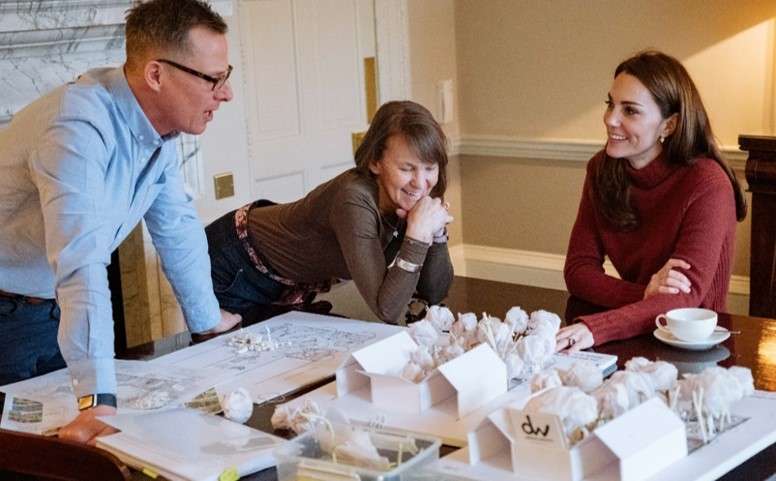
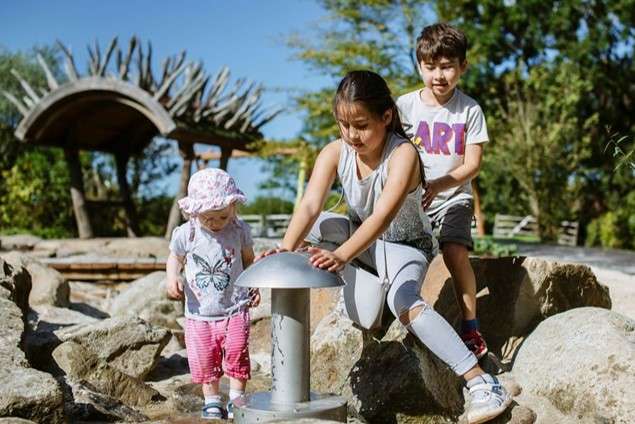
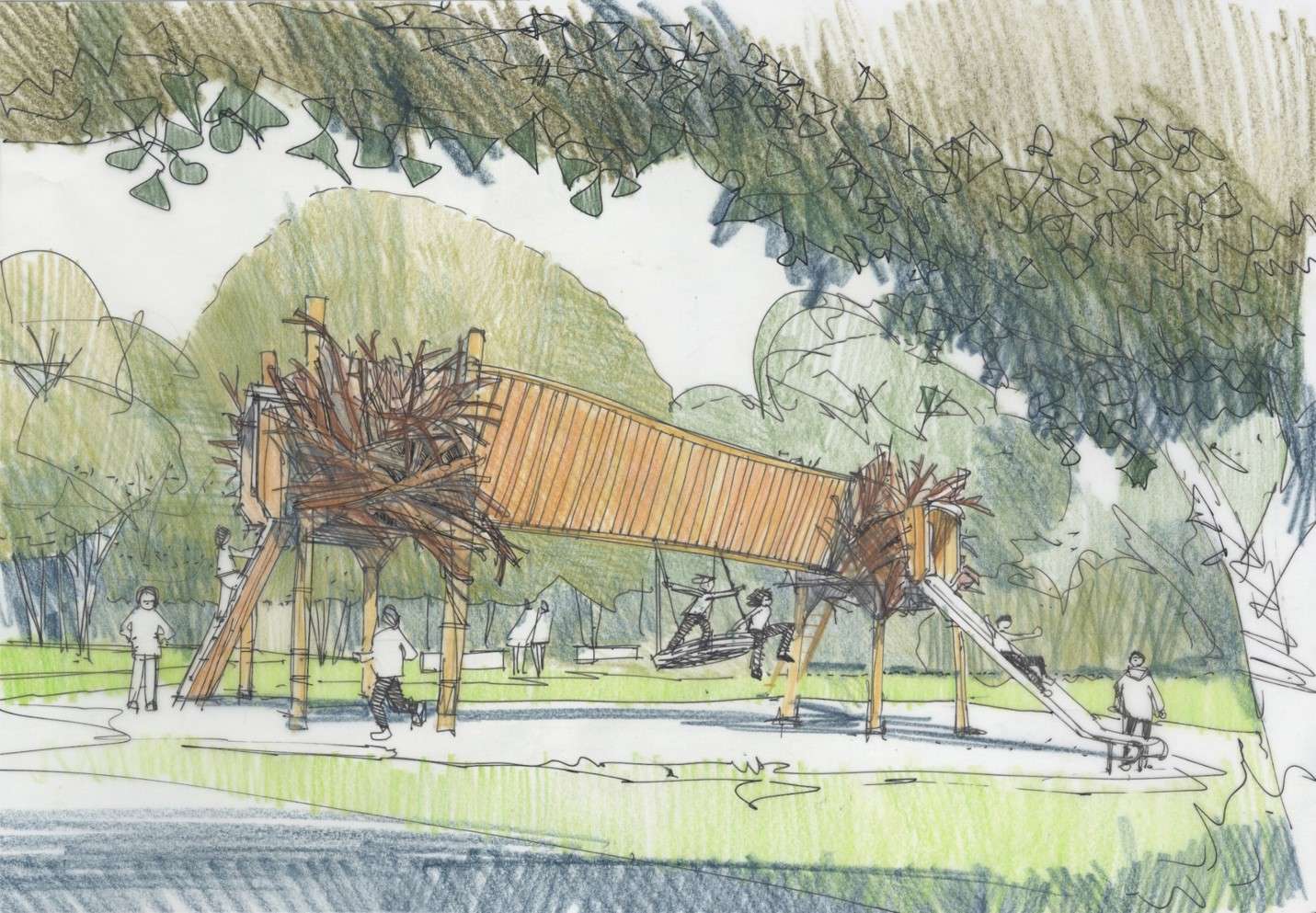
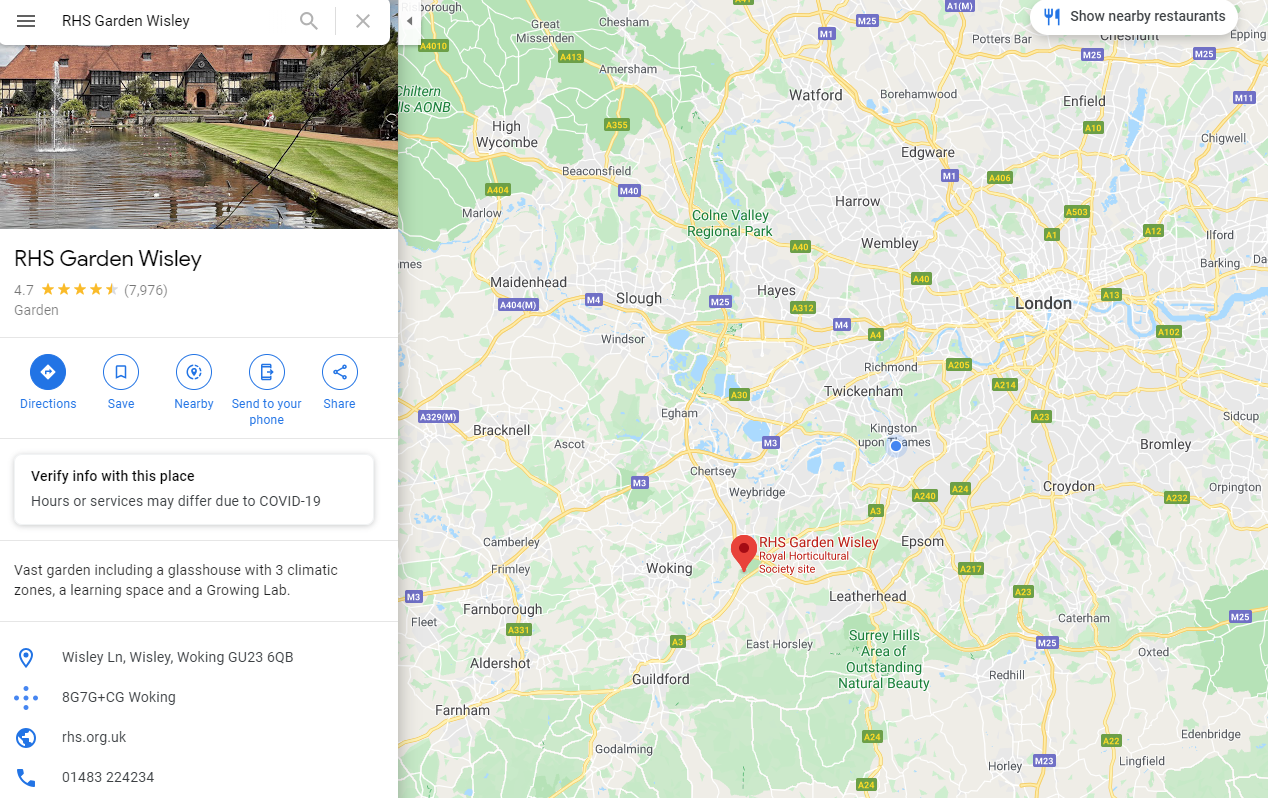
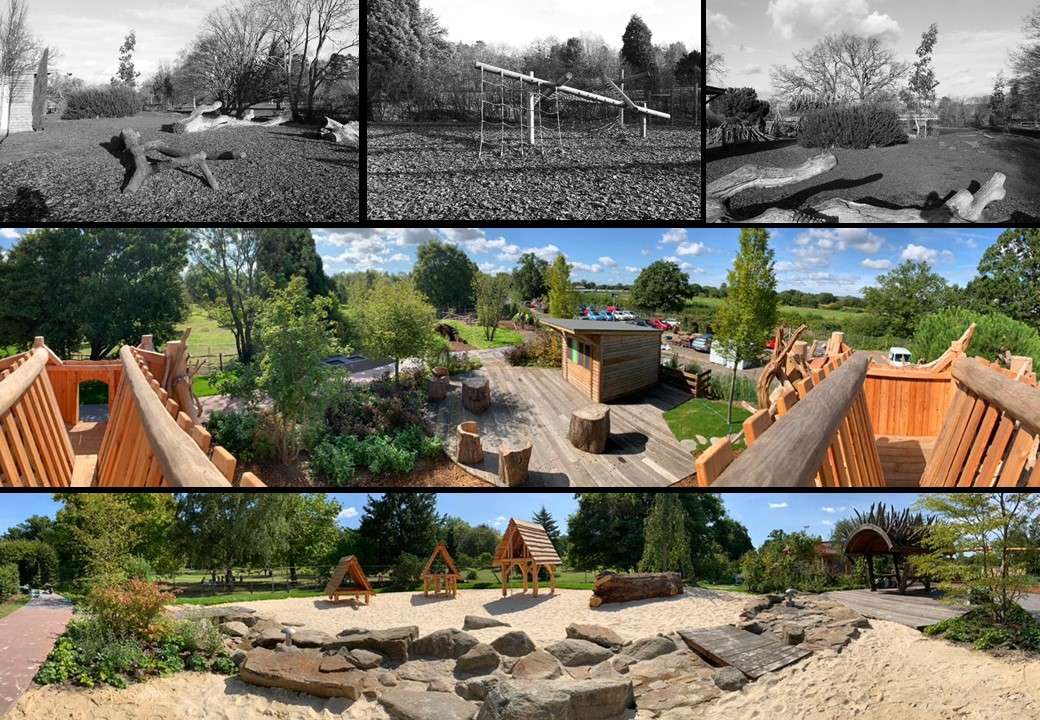

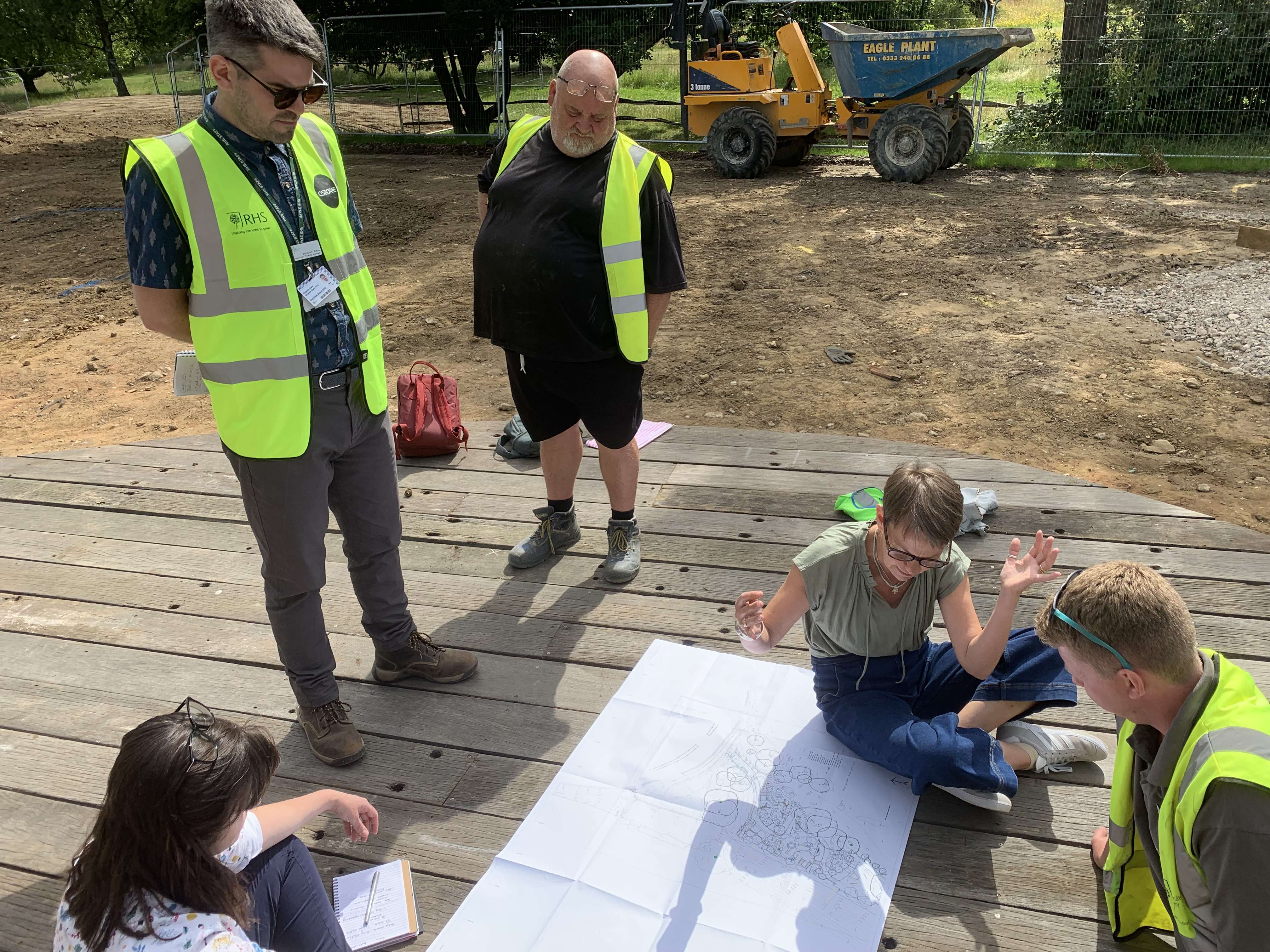
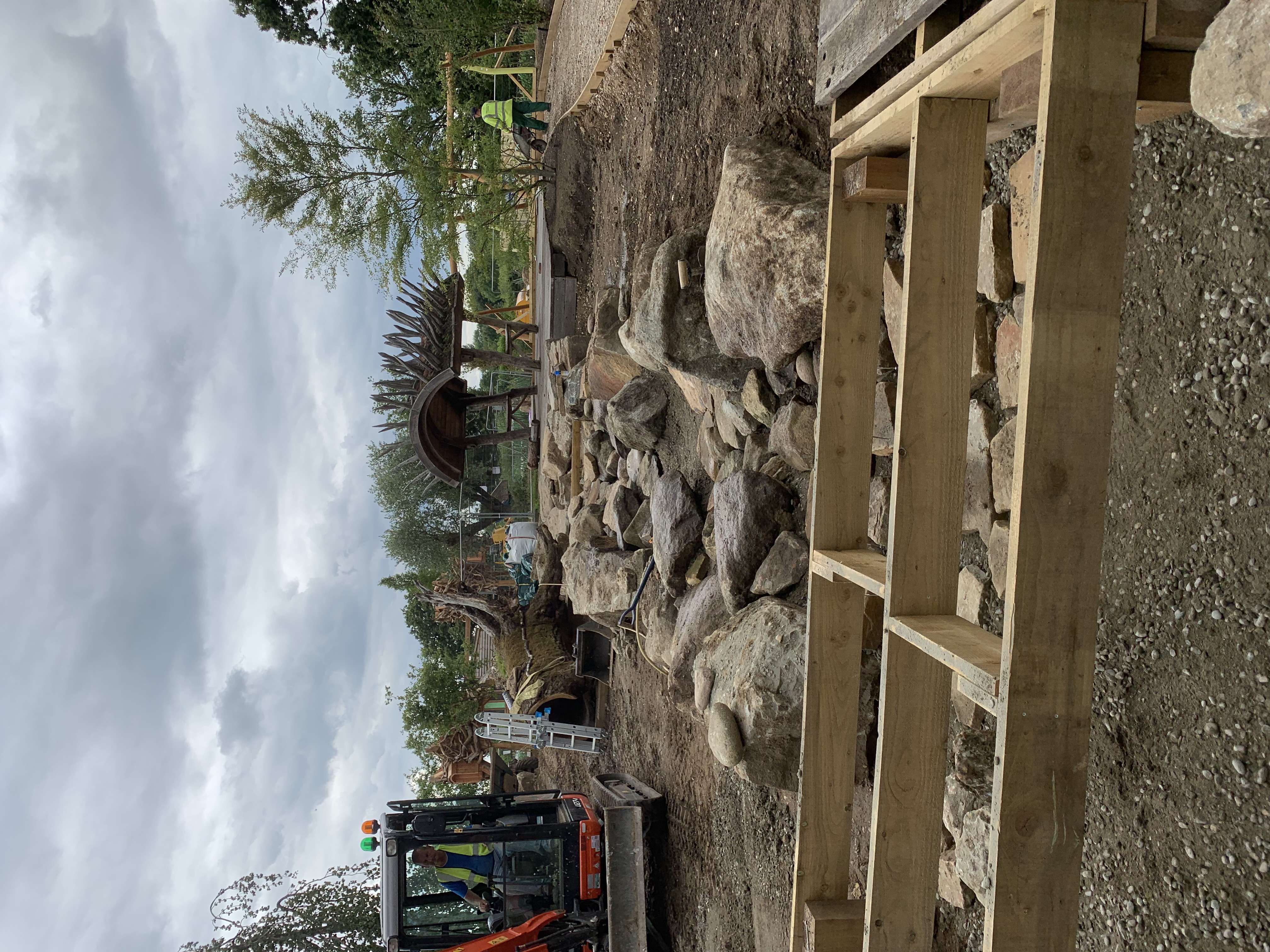

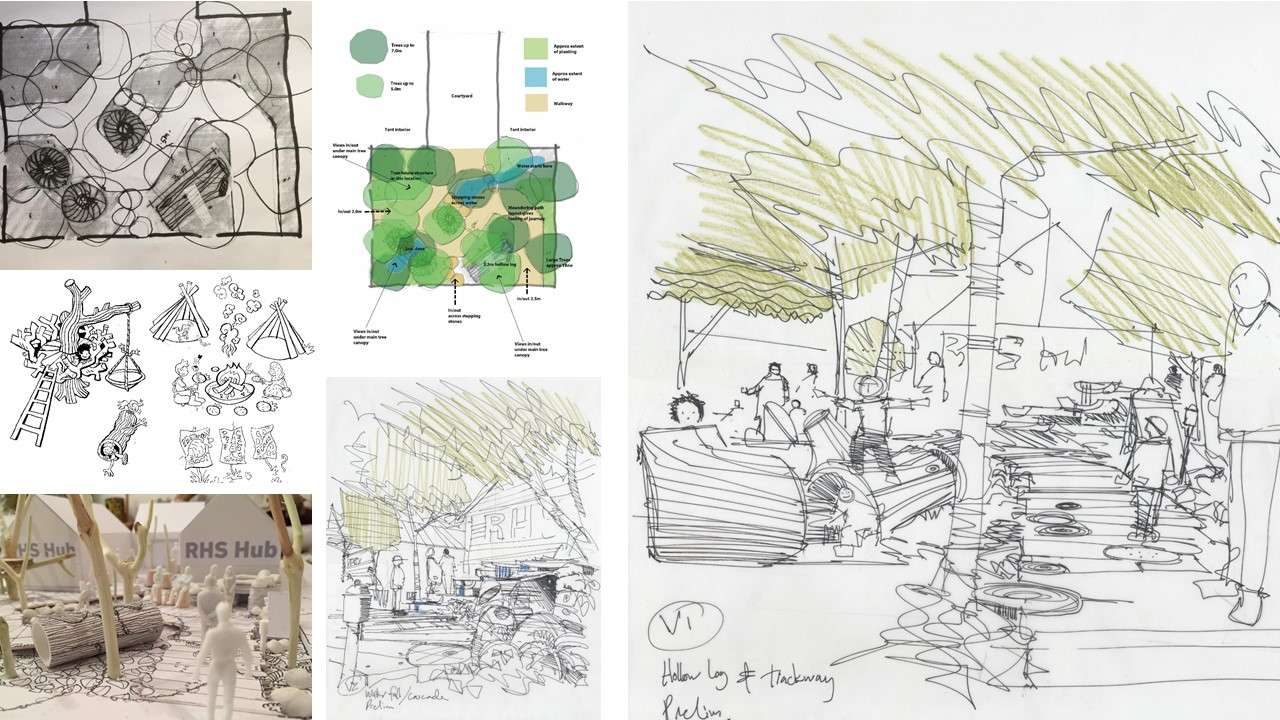
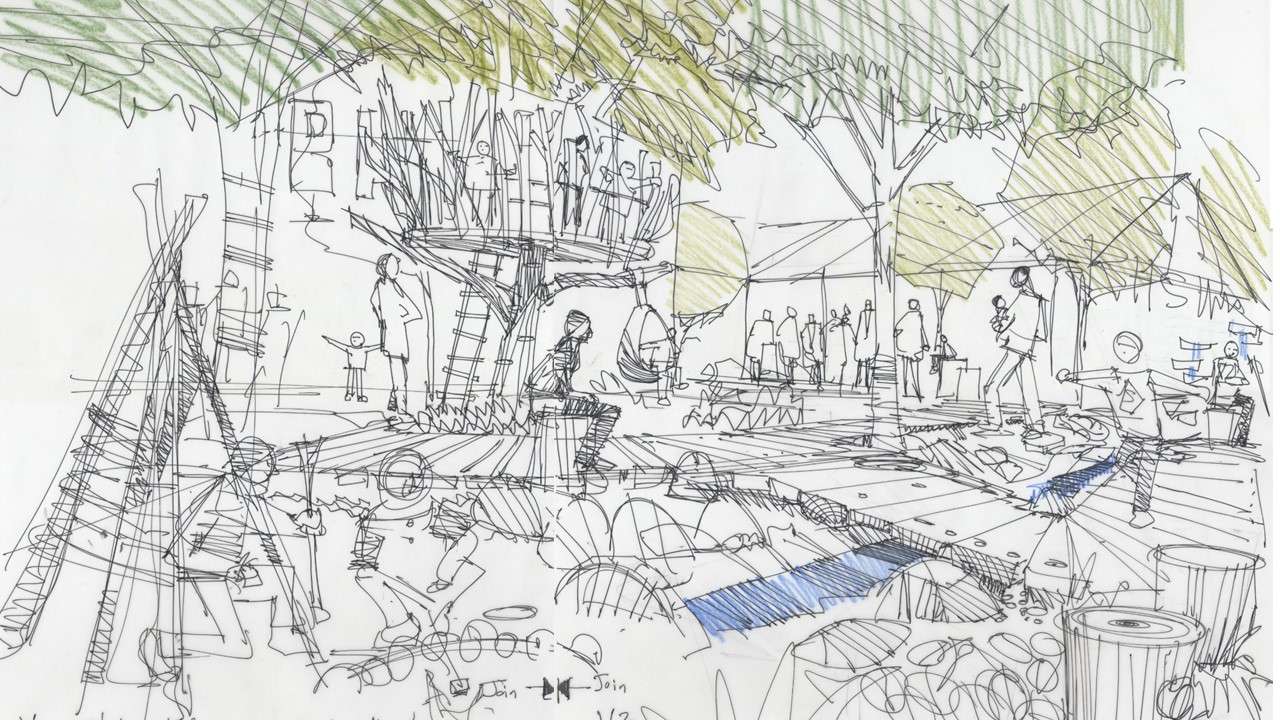
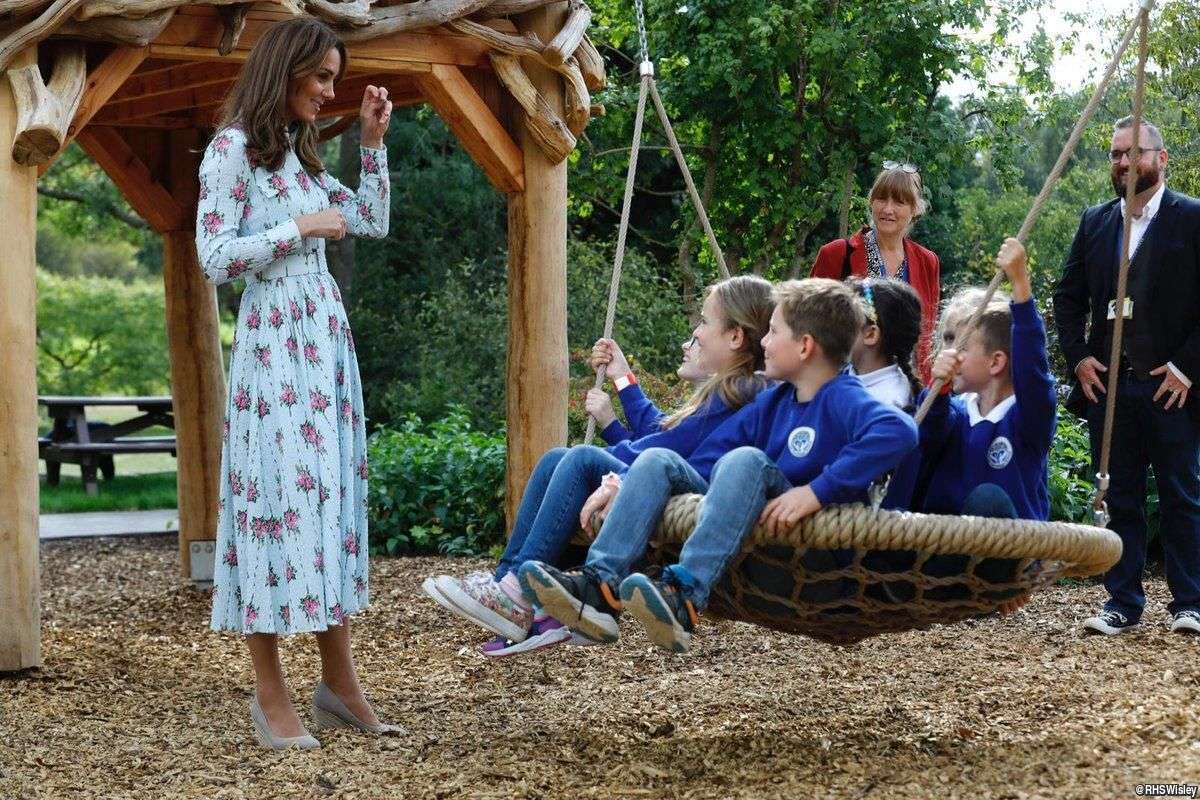
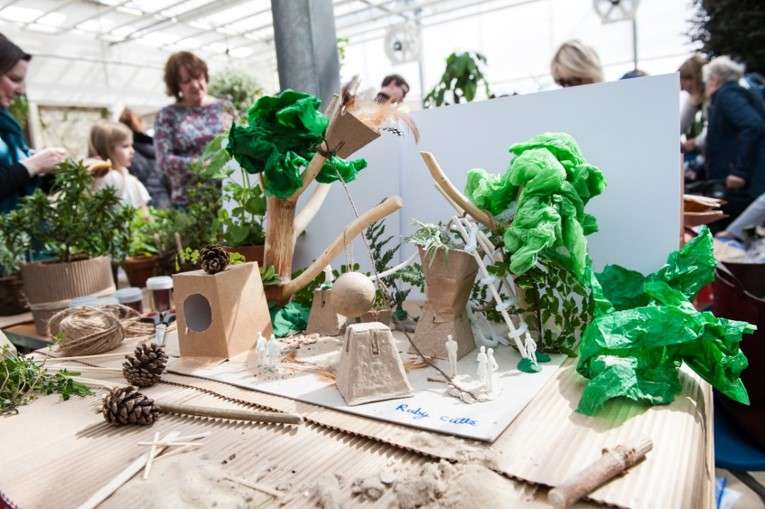
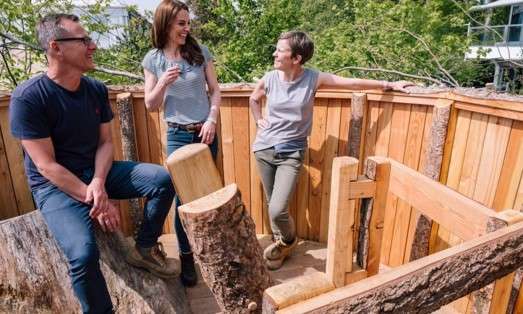
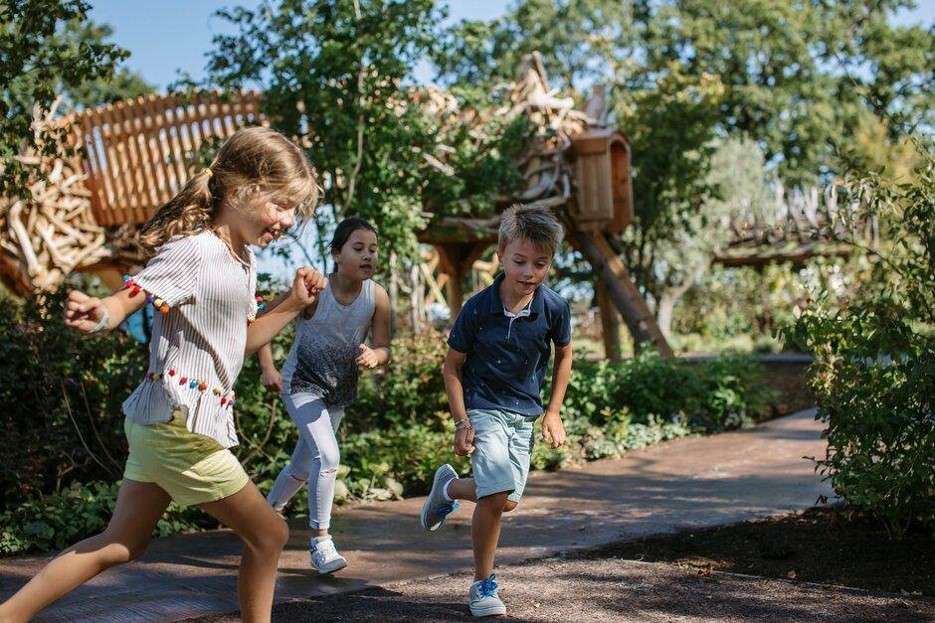


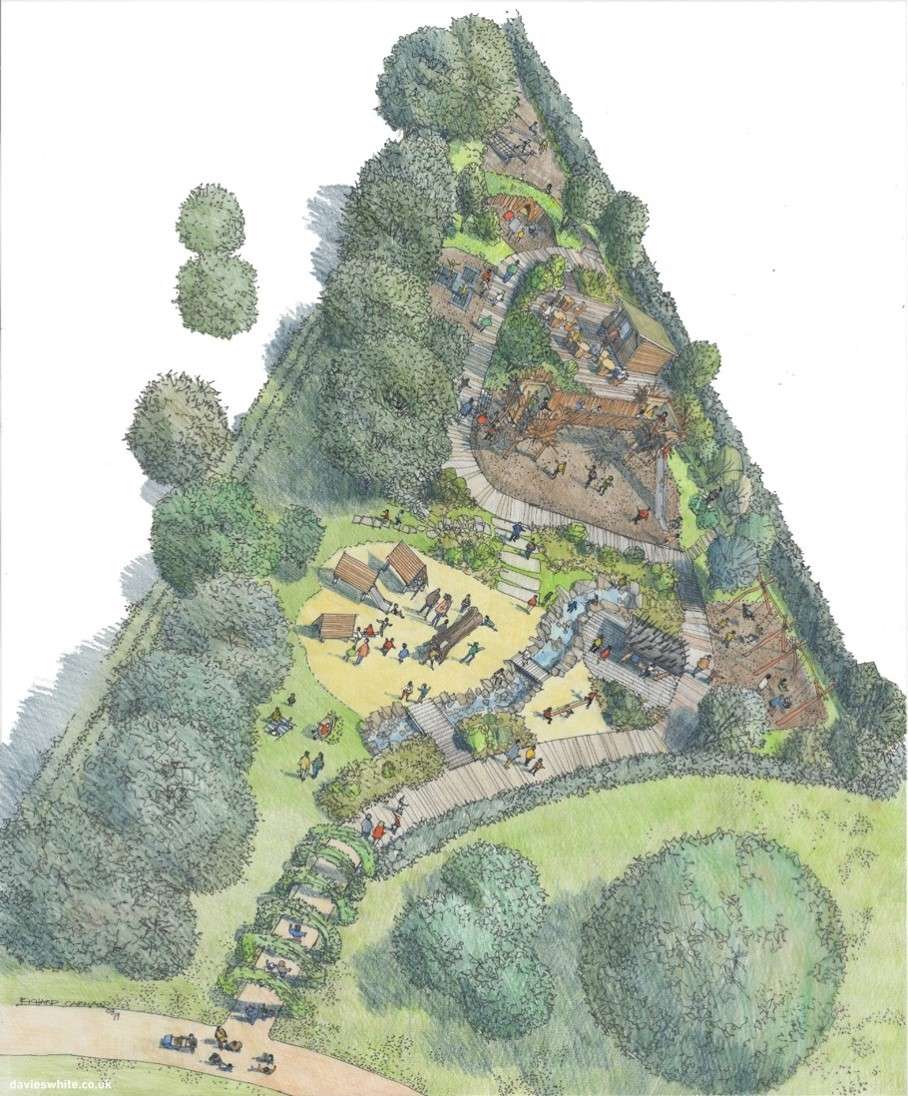
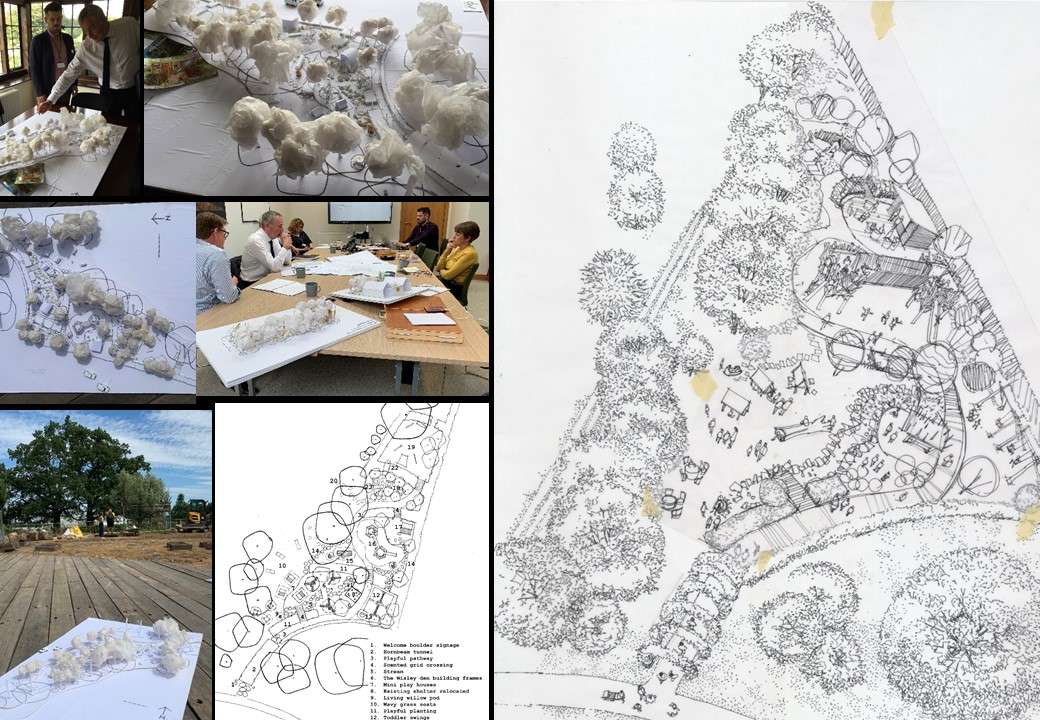
RHS Back to Nature Garden at RHS Wisley
RHS Back to Nature Garden at RHS Wisley
RHS Back to Nature Garden at RHS Wisley
The inspiration: The RHS Back to Nature Garden is perhaps one of the most prolific show gardens ever created at RHS Chelsea Flower Show in May 2019. It led to a larger version at RHS Hampton Garden Festival in July 2019. Both co-designed by landscape architects Andree Davies, Adam White and HRH the Duchess of Cambridge. The gardens led to the design of a third and permanent RHS Back to Nature garden at RHS Wisley.
Opened in September 2019, the RHS Back to Nature Garden aims to reconnect families with nature through play.
WHY IS THIS GARDEN AND PROJECT SPECIAL: https://youtu.be/x7y_LMXtO4U
Bespoke Design: The bespoke elements include two treehouses linked via an aerial walkway clad with stag horn Oak branches, inclusive swings, slides and accessible groundlevel trampolines, as well as a hollow log for climbing on and crawling through, a stream with water pumps, dens for hiding, living willow pods, a badger cave tunnel burrow and giant sand pit. All woven together with playful planting and a natural landscape. Elements of reasonable risk allow children to develop risk assessment skills and the bespoke design encourages cross generational play. WHO WE ARE: https://vimeo.com/371153546/17e89e3ee0 (watch the 1st minute!)
Industry Collaboration: Andree and Adam are Directors of Davies White Ltd and they led the team from inception to completion, this would involve 15 industry suppliers, 8 craftspeople supported by 15 dedicated volunteers to bring it to life. The BBC children's television programme, Blue Peter ran a competition for their young viewers to design a nature inspired sculpture for the garden which was judged by the client and HRH The Duchess of Cambridge. The sculpture was unveiled at the opening. CONSTRUCTION ON SITE: https://youtu.be/9wW5Fz1NtLo
Engagement: Andree Davies and Adam White facilitated a number of user engagement sessions with children of all ages. These took place during the design process and then again as part of the actual build stage on site. WATCH THE COMMUNITY WORKSHOP FILM: https://youtu.be/tIwATbvB4h0
They included:
- a hands on model making workshop
- a plant blindness workshop
- an on site tour during construction
- a hands on woodland craft workshop as part of the build stage
- several community planting days
Davies White Ltd set up tables with scented and aromatic plants that would eventually feature in the RHS Back to Nature Garden. Visitors and children were presented with the challenge to smell the plants and write down what it reminded them of, if any memories were evoked, and which plants they would like really to see (and smell) in the new garden. This is exercise was fun, but it has a serious side. We are using our nature play spaces to help tackle Plant Blindness. Plant Blindness is ‘an inability to recognise plants as wildlife. This term has been around years, and describes how some people underappreciate the flora around them and the important role it plays in supporting all living things.”
Volunteer Support: Reconnecting families with nature does not just happen in our open and completed nature play spaces. It also happens during the design & build, this is because Davies White Ltd always make arrangements with the client to allow volunteers to get involved in design and some of the build including the planting. This project in particular attracted lots of volunteers who stayed with it right through to the end.
Challenges: Access to this site was very good as we could use the staff car park route and the location at the corner of RHS Wisley meant we could Heras Fence off the site without disrupting the use of the wider gardens. Security was fine as the site falls with the secure gardens. The weather was very favourable and didn’t’ cause any delays to the delivery although the wildflower meadow took considerable looking after to help it to continue to flourish. The biggest challenge was retrofitting various elements from previous Back to Nature show gardens which included reusing the wildflower meadows, large trees, plants, stone, aggregate, sand and bespoke features. Collaboration and patience was key.
Sustainability - listed here are the items we reclaimed, upcycled a reused from previous projects
From our 2019 RHS Chelsea Back to Nature Garden:
- The reclaimed timber decking from Southend Pier used as the walkway at RHS Chelsea and RHS Hampton has been upcycled again in the RHS Wisley Back to Nature Garden
- Boulders and aggregate previously used for the RHS Chelsea and RHS Hampton waterfalls now create the playful stream in the RHS Wisley Back to Nature Garden
- The Hollow Log that featured in the RHS Chelsea and RHS Hampton garden is now located in the sand area in the RHS Wisley Back to Nature Garden
- Much of the playful planting from RHS Chelsea was used in the RHS Wisley Back to Nature Garden
- The 17 trees that created the dense woodland feel at RHS Chelsea, all between 5 and 6 metres tall are now part of the RHS Wisley Back to Nature Garden
- The hand carved cedar furniture which featured in the Back to Nature Hub area at RHS Chelsea is set outside the café kiosk in the RHS Wisley Back to Nature Garden
From our 2019 RHS Hampton Back to Nature Garden:
- The Wildflower meadow from RHS Hampton now covers the badger tunnel in the RHS Wisley Back to Nature Garden
- We redesigned the RHS Hampton tree house
- The new much bigger RHS Wisley badger tunnel entrance in the RHS Wisley Back to Nature Garden
- The magnifying post from RHS Hampton has be relocated into the RHS Wisley Back to Nature Garden
- The 60m instant wildlife friendly hedge used to create the back drop to the RHS Hampton garden now screens the staff car park from the RHS Wisley Back to Nature Garden
- The den building structures from both show gardens now form part of the free play area in the RHS Wisley Back to Nature Garden
From our 2017 RHS Wild Garden at RHS Hampton:
- The huge 10 ton sliced boulder footpath from our RHS Hampton Wild garden in 2017 has been upcycled as stepping stones in the RHS Wisley Back to Nature Garden
- Additional aggregate from the Wild Garden in 2017 helped complete the RHS Wisley Back to Nature Garden stream
- We have added the ground level trampoline from the Wild Garden in 2017 and added an extra two to create a ‘bouncing fruit forest’ in the RHS Wisley Back to Nature Garden
- We even had a few fruit trees left over from the 2017 Wild Garden and these have found their way into the RHS Wisley Back to Nature Garden
- A living willow pod from our 2017 Wild Garden made its new home in this project, they are a hugely popular feature in nature play spaces so we added a second as part the RHS Wisley Back to Nature Garden
- We used the reclaimed stag horn oak cladding on the new tree house at RHS Wisley Back to Nature Garden
- We reused an old slide on the tree house structure installed at RHS Wisley Back to Nature Garden
From the original Wild at Wisley Garden:
- We upcycled the shelter and added extra seating, it now forms a central feature in the RHS Wisley Back to Nature Garden
- We retained the Hornbeam Arch entrance walkway and laid a new footpath to make the spaces accessible and inclusive.
- We retained the original climbing structure at the far end of the garden
How we designed and delivered our most sustainable project to date at RHS Wisley.
From both a landscape design and landscape construction perspective we examined the input of resources and output of waste and to find ways to minimize both. Where possible we conserved water and energy, reduced waste and decreased runoff. In order to achieve these goals, we treated water as a resource, value soil we had, and preserved the existing plants and trees already on site.
No matter what project DWL are designing they always make choices that are sustainable. On the RHS Back to Nature Garden project DWL and GDL included recycled materials such as broken concrete, old slides and swing seats and planted tough resilient and in many cases drought-tolerant trees and perennials.
Taking a more sustainable approach to the landscape design and the build is not only a good choice for the environment, it can also save money.
- The benefits of using permeable impact surfacing mean we have prevented storm water runoff and will replenish the groundwater supply.
- We have use various drought-tolerant plants in which will minimize watering requirements.
- Our playful planting includes incredible edibles that can be harvested.
- Without compromising safety and quality we have where possible repurposed salvaged items, such as old slides, swings and fixings.
- We have used mature trees to help reduce and capture carbon, water and provide shade.
We believe in local sourcing and sustainability, so every piece of wood used in the garden on our bespoke play structures was sourced within 50 miles of the carpenter’s timber yard, from traditionally managed woodlands.
We have used timber with inherent longevity and rot resistance and any treatments are minimal in order to avoid damage to either the environment, wildlife, our operatives or end users. At the end of their useful life, our structures are easily dismantled, and most component parts can be repurposed or chipped and used for fuel
We have used loose impact absorbing surfaces as it has the lowest carbon footprint however the specification is often chosen by the client. The concrete footpath is designed to be an accessible and inclusive route through the garden but it impoprtantly holds and contains the loose fill material, reducing the need to refill and top up each year. Our construction techniques produce minimal excavated material and working with the RHS we re-use this on site and avoided the need for disposal to a landfill site.
Why should this project win: It is a true example of what can be achieved through genuine collaboration. It is without doubt the best example of how a how a show garden can be as sustainable as possible, almost everything was recycled. The RHS Back to Nature Garden is proof that with forward planning and joined up team work, not one but two show gardens can lead to the creation of a high quality, innovative and sustainable green space that will benefit everybody, particularly younger generation for years to come. It is already being called the new benchmark for public play space design in the UK and will no doubt inspire many clients and designers to create more sustaianable and nature friendly spaces for children of all ages.
Andrée Davies and Adam White are directors of Davies White Ltd. They are RHS Hampton Court Palace Flower Show double RHS Gold Medal, double RHS People’s Choice and RHS Best in Show Award winning landscape architects. They are considered the UK’s leading nature play space designers. They are both founding trustees of the Sustainable Landscape Foundation and Adam is the current President of the Landscape Institute.
In 2008 they established their chartered landscape architects practice to focus on creating more accessible and inclusive nature play spaces that help reconnect children of all abilities with nature. Since 2009 they have created over 100 nature play spaces across the UK.
During 2019 they worked with HRH the Duchess of Cambridge to design and create four children’s Back to Nature gardens for the RHS. These included a garden at RHS Chelsea and RHS Hampton along with two permanent gardens at RHS Wisley and an NHS Trust in Devon. They have engaged, designed and created play spaces from the shores of Loch Lomond in Scotland to the coast of Southampton in the south of England. They have just completed the delivery of Northern Ireland's largest ever Nature Play Trail. Clients include the RSPB, National Trust and the Forestry Commission.
Project inspiration: The RHS Back to Nature Garden is perhaps one of the most prolific show gardens ever created at RHS Chelsea Flower Show in May 2019. It led to a larger version at RHS Hampton Garden Festival in July 2019. Both co-designed by landscape architects Andree Davies, Adam White and HRH the Duchess of Cambridge. The gardens led to the design of a third and permanent RHS Back to Nature garden at RHS Wisley.
Opened in September 2019, the RHS Back to Nature Garden aims to reconnect families with nature through play.
WHY IS THIS GARDEN AND PROJECT SPECIAL: https://youtu.be/x7y_LMXtO4U
Bespoke Design: The bespoke elements include two treehouses linked via an aerial walkway clad with stag horn Oak branches, inclusive swings, slides and accessible groundlevel trampolines, as well as a hollow log for climbing on and crawling through, a stream with water pumps, dens for hiding, living willow pods, a badger cave tunnel burrow and giant sand pit. All woven together with playful planting and a natural landscape. Elements of reasonable risk allow children to develop risk assessment skills and the bespoke design encourages cross generational play. WHO WE ARE: https://vimeo.com/371153546/17e89e3ee0 (watch the 1st minute!)
Industry Collaboration: Andree and Adam are Directors of Davies White Ltd and they led the team from inception to completion, this would involve 15 industry suppliers, 8 craftspeople supported by 15 dedicated volunteers to bring it to life. The BBC children's television programme, Blue Peter ran a competition for their young viewers to design a nature inspired sculpture for the garden which was judged by the client and HRH The Duchess of Cambridge. The sculpture was unveiled at the opening. CONSTRUCTION ON SITE: https://youtu.be/9wW5Fz1NtLo
Engagement: Andree Davies and Adam White facilitated a number of user engagement sessions with children of all ages. These took place during the design process and then again as part of the actual build stage on site. WATCH THE COMMUNITY WORKSHOP FILM: https://youtu.be/tIwATbvB4h0
They included:
- a hands on model making workshop
- a plant blindness workshop
- an on site tour during construction
- a hands on woodland craft workshop as part of the build stage
- several community planting days
Davies White Ltd set up tables with scented and aromatic plants that would eventually feature in the RHS Back to Nature Garden. Visitors and children were presented with the challenge to smell the plants and write down what it reminded them of, if any memories were evoked, and which plants they would like really to see (and smell) in the new garden. This is exercise was fun, but it has a serious side. We are using our nature play spaces to help tackle Plant Blindness. Plant Blindness is ‘an inability to recognise plants as wildlife. This term has been around years, and describes how some people underappreciate the flora around them and the important role it plays in supporting all living things.”
Volunteer Support: Reconnecting families with nature does not just happen in our open and completed nature play spaces. It also happens during the design & build, this is because Davies White Ltd always make arrangements with the client to allow volunteers to get involved in design and some of the build including the planting. This project in particular attracted lots of volunteers who stayed with it right through to the end.
Challenges: Access to this site was very good as we could use the staff car park route and the location at the corner of RHS Wisley meant we could Heras Fence off the site without disrupting the use of the wider gardens. Security was fine as the site falls with the secure gardens. The weather was very favourable and didn’t’ cause any delays to the delivery although the wildflower meadow took considerable looking after to help it to continue to flourish. The biggest challenge was retrofitting various elements from previous Back to Nature show gardens which included reusing the wildflower meadows, large trees, plants, stone, aggregate, sand and bespoke features. Collaboration and patience was key.
Sustainability - listed here are the items we reclaimed, upcycled a reused from previous projects
From our 2019 RHS Chelsea Back to Nature Garden:
- The reclaimed timber decking from Southend Pier used as the walkway at RHS Chelsea and RHS Hampton has been upcycled again in the RHS Wisley Back to Nature Garden
- Boulders and aggregate previously used for the RHS Chelsea and RHS Hampton waterfalls now create the playful stream in the RHS Wisley Back to Nature Garden
- The Hollow Log that featured in the RHS Chelsea and RHS Hampton garden is now located in the sand area in the RHS Wisley Back to Nature Garden
- Much of the playful planting from RHS Chelsea was used in the RHS Wisley Back to Nature Garden
- The 17 trees that created the dense woodland feel at RHS Chelsea, all between 5 and 6 metres tall are now part of the RHS Wisley Back to Nature Garden
- The hand carved cedar furniture which featured in the Back to Nature Hub area at RHS Chelsea is set outside the café kiosk in the RHS Wisley Back to Nature Garden
From our 2019 RHS Hampton Back to Nature Garden:
- The Wildflower meadow from RHS Hampton now covers the badger tunnel in the RHS Wisley Back to Nature Garden
- We redesigned the RHS Hampton tree house
- The new much bigger RHS Wisley badger tunnel entrance in the RHS Wisley Back to Nature Garden
- The magnifying post from RHS Hampton has be relocated into the RHS Wisley Back to Nature Garden
- The 60m instant wildlife friendly hedge used to create the back drop to the RHS Hampton garden now screens the staff car park from the RHS Wisley Back to Nature Garden
- The den building structures from both show gardens now form part of the free play area in the RHS Wisley Back to Nature Garden
From our 2017 RHS Wild Garden at RHS Hampton:
- The huge 10 ton sliced boulder footpath from our RHS Hampton Wild garden in 2017 has been upcycled as stepping stones in the RHS Wisley Back to Nature Garden
- Additional aggregate from the Wild Garden in 2017 helped complete the RHS Wisley Back to Nature Garden stream
- We have added the ground level trampoline from the Wild Garden in 2017 and added an extra two to create a ‘bouncing fruit forest’ in the RHS Wisley Back to Nature Garden
- We even had a few fruit trees left over from the 2017 Wild Garden and these have found their way into the RHS Wisley Back to Nature Garden
- A living willow pod from our 2017 Wild Garden made its new home in this project, they are a hugely popular feature in nature play spaces so we added a second as part the RHS Wisley Back to Nature Garden
- We used the reclaimed stag horn oak cladding on the new tree house at RHS Wisley Back to Nature Garden
- We reused an old slide on the tree house structure installed at RHS Wisley Back to Nature Garden
From the original Wild at Wisley Garden:
- We upcycled the shelter and added extra seating, it now forms a central feature in the RHS Wisley Back to Nature Garden
- We retained the Hornbeam Arch entrance walkway and laid a new footpath to make the spaces accessible and inclusive.
- We retained the original climbing structure at the far end of the garden
How we designed and delivered our most sustainable project to date at RHS Wisley.
From both a landscape design and landscape construction perspective we examined the input of resources and output of waste and to find ways to minimize both. Where possible we conserved water and energy, reduced waste and decreased runoff. In order to achieve these goals, we treated water as a resource, value soil we had, and preserved the existing plants and trees already on site.
No matter what project DWL are designing they always make choices that are sustainable. On the RHS Back to Nature Garden project DWL and GDL included recycled materials such as broken concrete, old slides and swing seats and planted tough resilient and in many cases drought-tolerant trees and perennials.
Taking a more sustainable approach to the landscape design and the build is not only a good choice for the environment, it can also save money.
- The benefits of using permeable impact surfacing mean we have prevented storm water runoff and will replenish the groundwater supply.
- We have use various drought-tolerant plants in which will minimize watering requirements.
- Our playful planting includes incredible edibles that can be harvested.
- Without compromising safety and quality we have where possible repurposed salvaged items, such as old slides, swings and fixings.
- We have used mature trees to help reduce and capture carbon, water and provide shade.
We believe in local sourcing and sustainability, so every piece of wood used in the garden on our bespoke play structures was sourced within 50 miles of the carpenter’s timber yard, from traditionally managed woodlands.
We have used timber with inherent longevity and rot resistance and any treatments are minimal in order to avoid damage to either the environment, wildlife, our operatives or end users. At the end of their useful life, our structures are easily dismantled, and most component parts can be repurposed or chipped and used for fuel
We have used loose impact absorbing surfaces as it has the lowest carbon footprint however the specification is often chosen by the client. The concrete footpath is designed to be an accessible and inclusive route through the garden but it impoprtantly holds and contains the loose fill material, reducing the need to refill and top up each year. Our construction techniques produce minimal excavated material and working with the RHS we re-use this on site and avoided the need for disposal to a landfill site.
Why should this project win: It is a true example of what can be achieved through genuine collaboration. It is without doubt the best example of how a how a show garden can be as sustainable as possible, almost everything was recycled. The RHS Back to Nature Garden is proof that with forward planning and joined up team work, not one but two show gardens can lead to the creation of a high quality, innovative and sustainable green space that will benefit everybody, particularly younger generation for years to come. It is already being called the new benchmark for public play space design in the UK and will no doubt inspire many clients and designers to create more sustaianable and nature friendly spaces for children of all ages.
